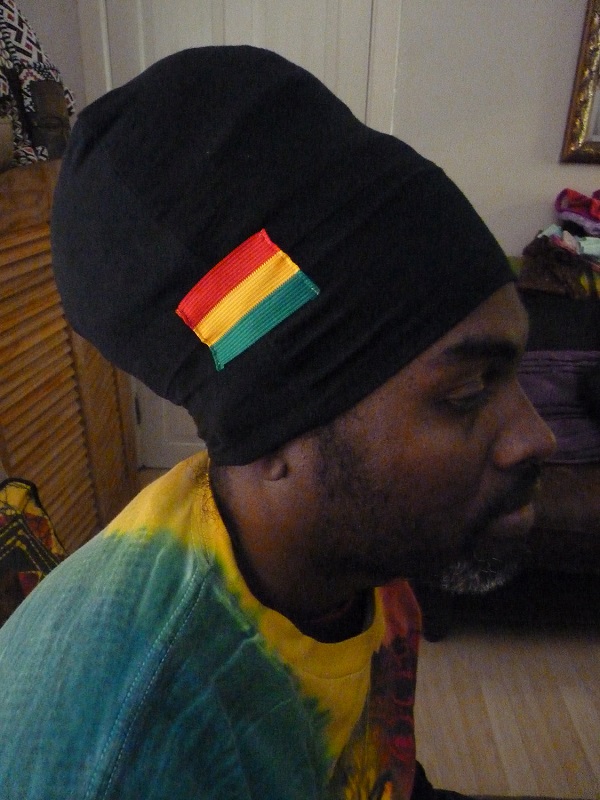Community news. In the 1970s, the black coloured tam, similar in shape to today’s beanie hat, became a symbol of African consciousness among young African Caribbean males. Later as many youths embraced the Rastafarianism movement and grew dreadlocks, a more practical type of head covering was needed to accommodate and cover their growing hair. The new style, usually crocheted by a girlfriend or sister, was an enlarged tam with a rim and had the red, gold and green colours of the old Ethiopian flag incorporated into the design.
Each of the colours had a symbolic meaning to those with Rastafarian beliefs. As the smoking of ganja was an integral part of their religious beliefs, the colour red represented a cycle of shed blood that went back to the soil and replenished the ground, thus helping the ganja to grow. Green connected them to Africa and represented Africa’s vegetation, while the gold was a reminder of the wealth of Africa, its gold and other precious stones extracted before and during slavery. Within the Rastafarian community, this type of headwear became known as a crown.
A woman who embraced Rastafarianism was to keep her head covered in public and many chose the head wrap for that purpose. The head wrap is a large rectangular piece of fabric, about six feet in length that was wrapped around the head several times and fashioned into an upward or downward turban. The scriptural justification for women covering their head comes from 1.Corinthians.11.5, which reads; ‘But every woman that prayeth or prophesieth with her head uncovered dishonoureth her head: for that is even all one as if she were shaven.’ (King James Bible. 1611).
The same scriptures continued to explain that a woman was to have her head covered out of respect for the headship of a man. After emancipation in 1834, education became synonymous with the church and many former slaves sought education and social mobility through the church systems who promised them equality. Because of the above scripture, the culture of wearing hats during church meetings evolved among African Caribbean women, who saw the weekly church meetings as an opportunity to dress in their best clothing.
Today, in African-Caribbean communities in the UK and in the Caribbean, hats are a common fashion accessory for young and old of both sexes. For younger women of African descent the re-emergence of the head tie as a fashion statement means that they can cover a bad hair day and be culturally trendy.




